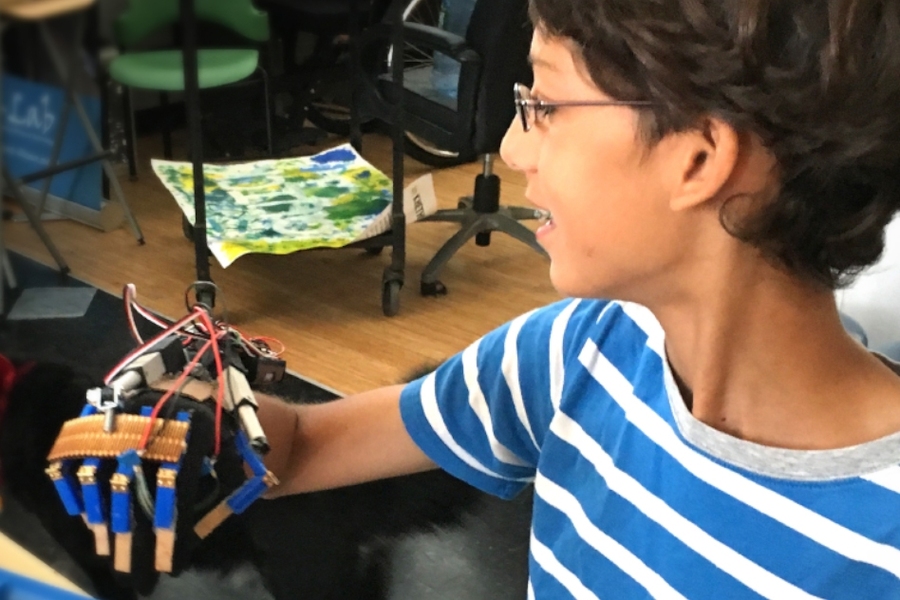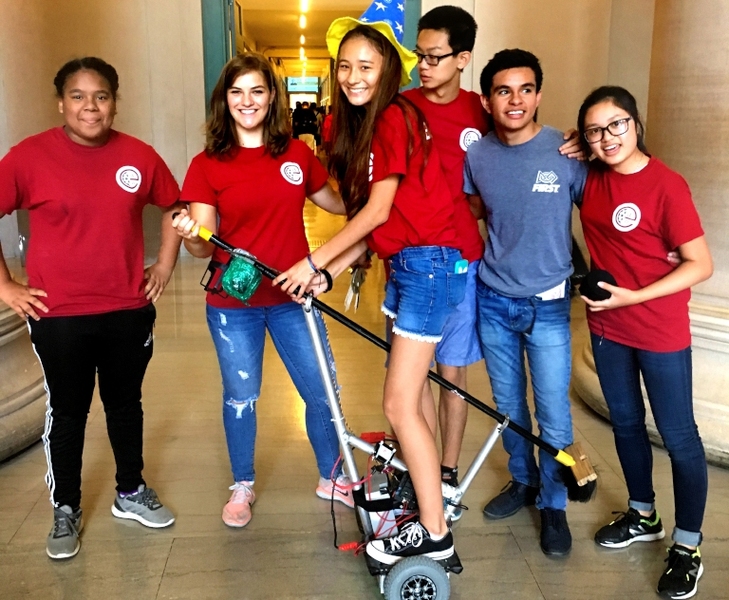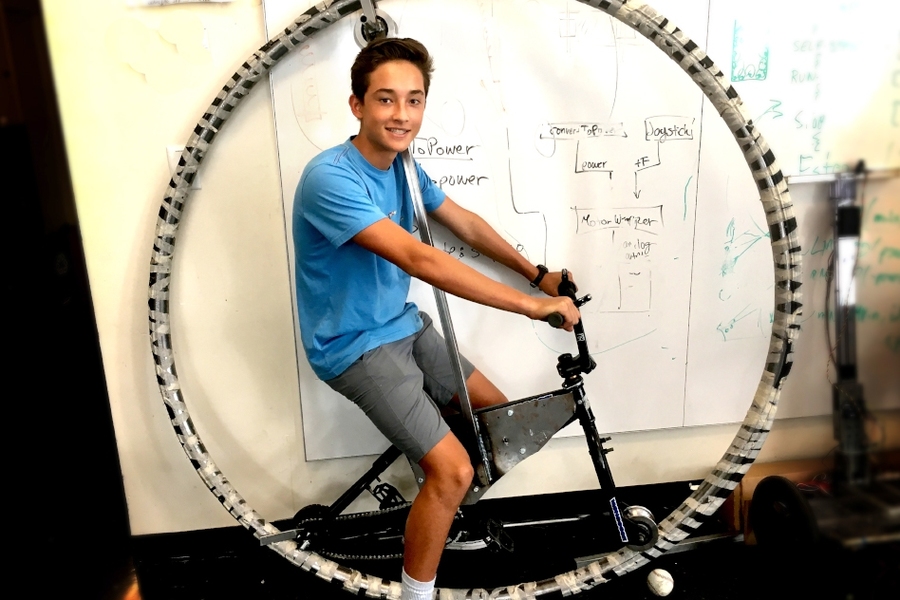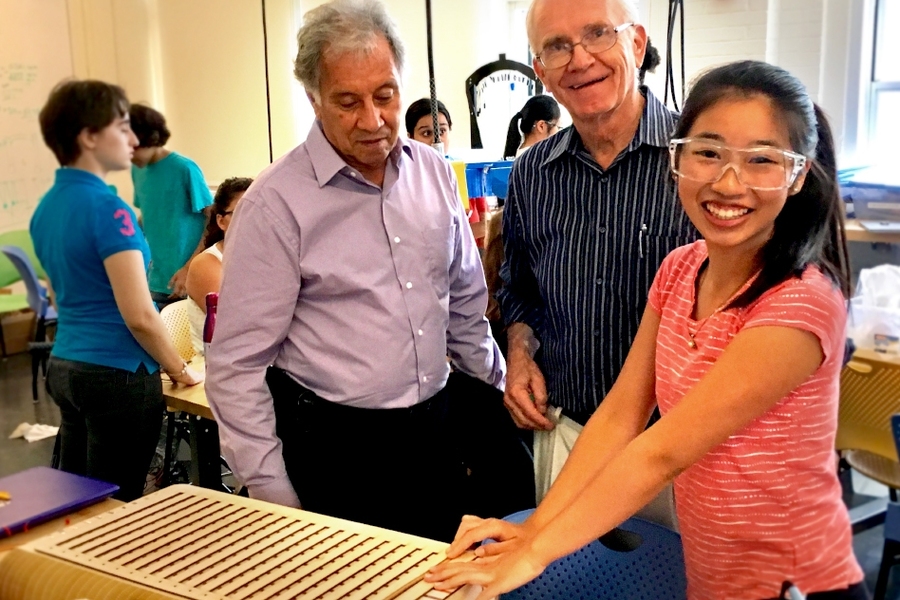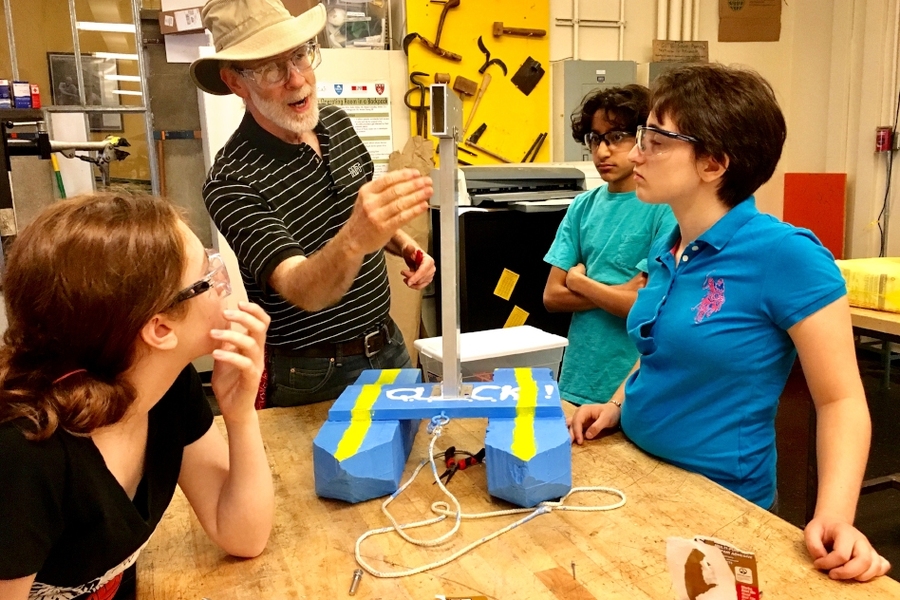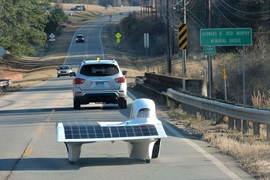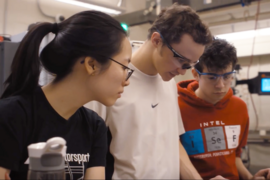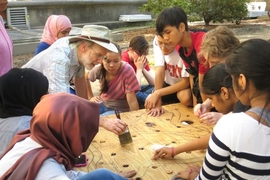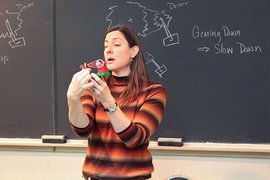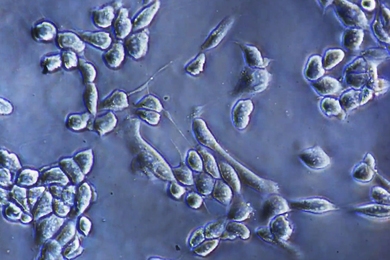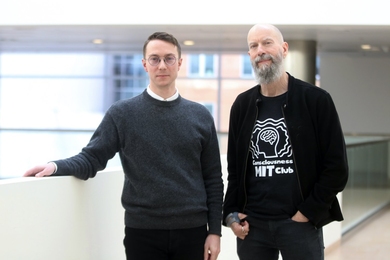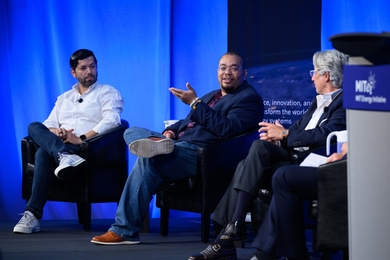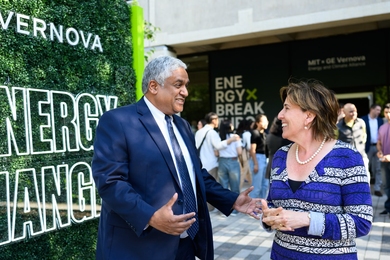A group of high school students, some from as far away as Italy and China, came to MIT’s Edgerton Center this summer to learn more about what it takes to be an engineer — and learned a bit more about themselves as well.
Now in its 12th year, the Edgerton Center’s Engineering Design Workshop (EDW) brought together 27 students in a month-long creative binge to flesh out their own projects. Some were practical, some were whimsical, but all were challenging and fun.
The students started out the summer by learning basic electronics, mechanical fabrication, and a bit of 3-D printing. They then broke up into teams and brainstormed their own creations under the guidance of the program’s mentors, many of whom are EDW alumni themselves.
This year’s final designs, which were showcased in a final presentation for the kids and their parents on Aug. 3, included an automated river water monitoring platform; an improved ship dry dock; an interactive light game; a monowheel unicycle; a bionic exoskeleton; and what can best be described as a cross between a Segway and a Nimbus 2000 broomstick from Harry Potter (but with cup holders).
Many of the kids seemed shy at first to talk about their projects, but Edgerton Center instructor Chris Mayer gently urged them on.
“Why don’t you bring that over to the audience, so they could have a closer look?” he said. Invariably, the kids’ close-up demonstrations of their work elicited amazed gasps and nods from the crowd.
For some like Luo Yan, a senior high school student from the Shanghai Foreign Language School, the workshop was also a hands-on history lesson. He and his team researched the design of Boston’s historic Charlestown Navy Yard and built a scale mock-up showcasing their proposed improvements to its long-defunct dry dock.
“This has a lot of stories behind it,” he said, pointing to the miniature replicas of the yard’s buildings, which were built in 1833. “I just want to see it working again.”
Thirteen-year-old Mohan Hathi of Cambridge Rindge and Latin School said Team Exoskeleton’s big idea was to build an assistive system that could help users who don't have enough strength in their arm or hand to pick up everyday objects. They were inspired by the story of an incoming MIT student who had lost some function in his hand in an accident.
"We were surprised by our results—the hand and arm were easy to control, while also being strong and precise," Hathi said.
Team QUICK (short for aQuatic Underwater Information Collecting Kit) built a submersible sensor platform that could be used for environmental monitoring in the Charles River and other bodies of water. But barely had they presented their final design when the team was already considering how it could be improved — better battery life, perhaps, or more robust sensors.
True to its name, Team LIT (Light Interactive Technology) designed an Arduino-controlled LED wall display, and even came up with a fairy-catching game to go along with it. In the game, a light "fairy" would flit about, and a controller box off to the side allowed players to light up parts of the wall to block its path.
Meanwhile, teams Monowheel and Broomba showcased their unusual transport designs. The former was a one-wheeled single-track vehicle and the latter a self-balancing witch’s broomstick on wheels. More whimsical than practical, they nevertheless offered an interesting and fun way to get around.
Though not everyone was able to get their creations off the ground, Edgerton Center instructor Ed Moriarty ’76 said, the experience is invaluable in itself. Moriarty has been with the workshop from the very beginning and has served as both mentor and friend to all its past and present participants.
“We did not say that you have to succeed in building your project. We said you have to care about your project,” he explained. “We did not set this up as an instructional thing. This is, ‘Hey, what do you want to build?’ ‘Hey, let’s go try it!”
“This isn’t about teaching,” he added. “This is about empowering students to get together and do things.”
That's something that Moriarty takes to heart and has been sharing with high school students — or anyone who happens to drop by the Edgerton Center on a lazy Saturday afternoon — for years now. If you have a big idea, he believes you should always chase it down the rabbit hole, because no matter where you end up, it’ll always be an adventure.
